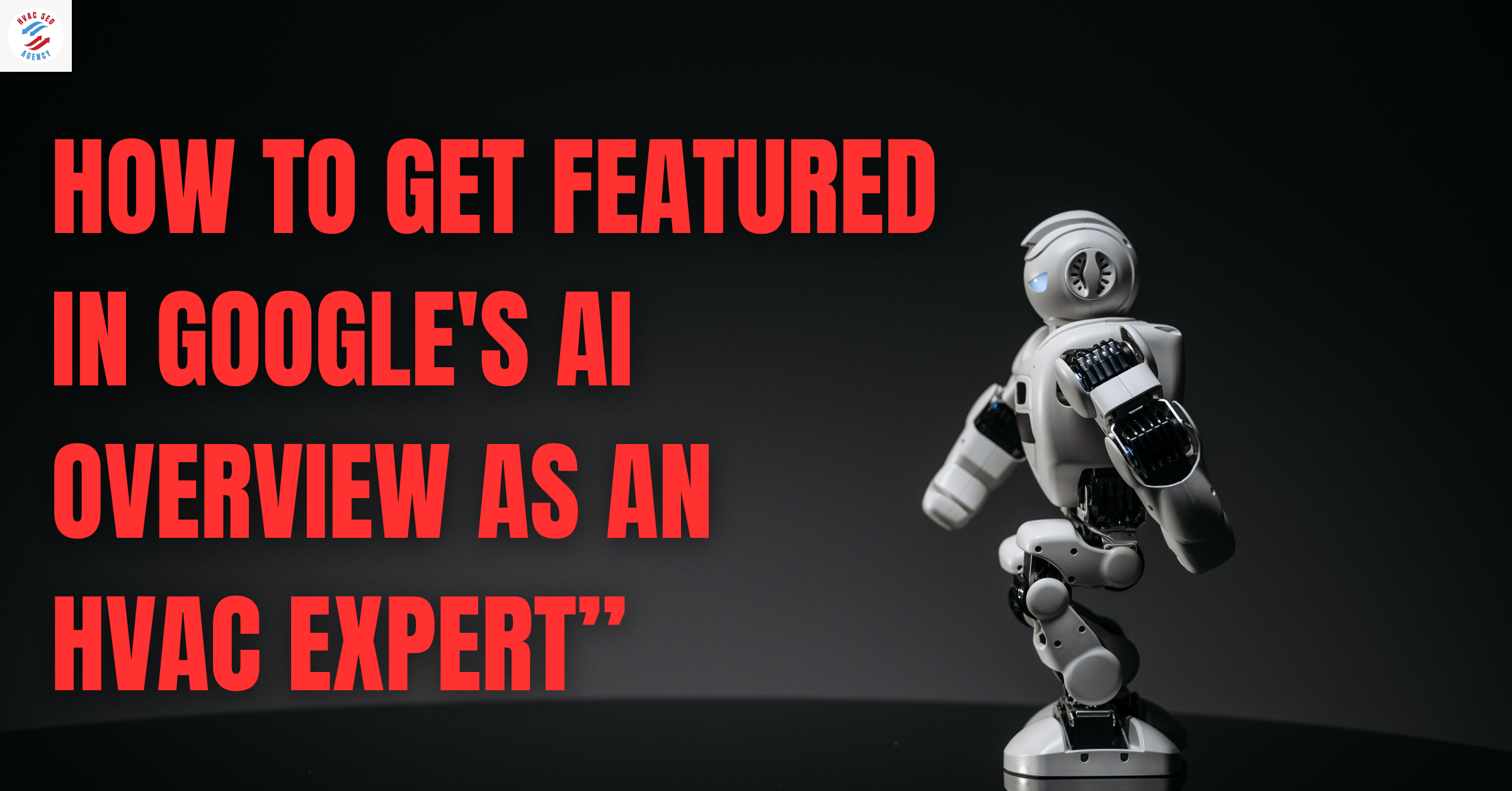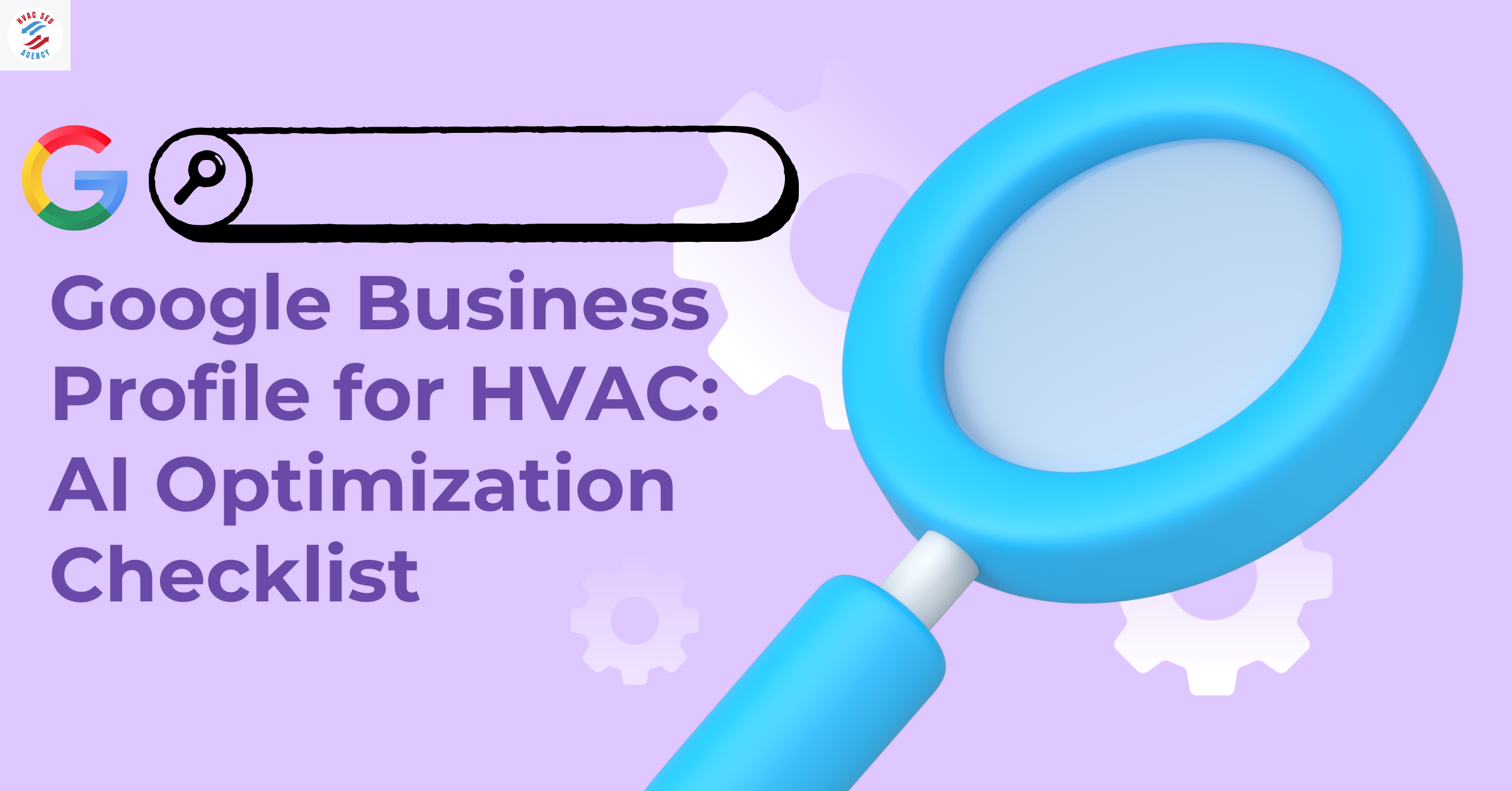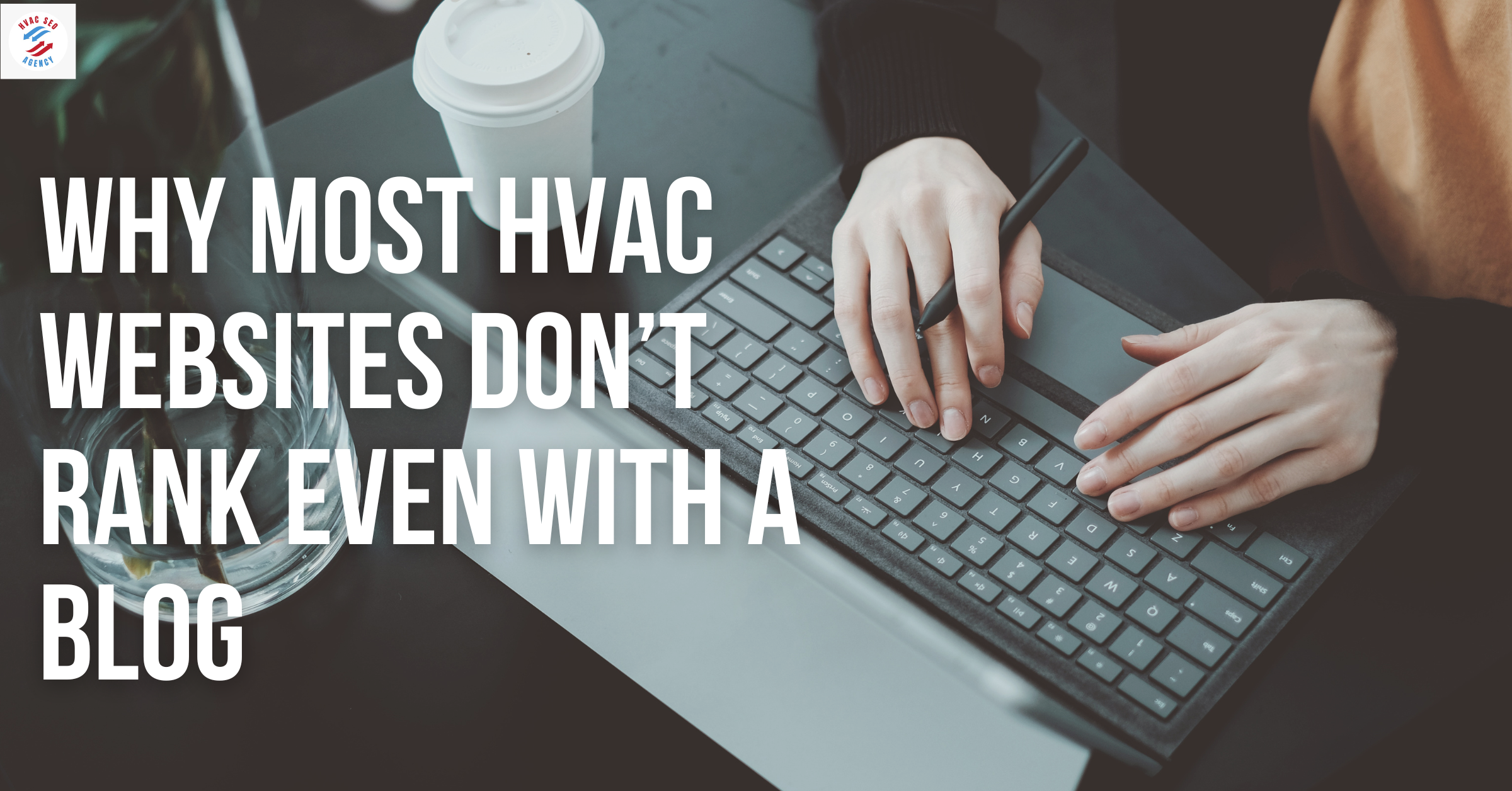Radiant Floor Heating: Installation Guide and Benefits

Radiant floor heating installation has emerged as a popular and efficient method for indoor climate control in the USA. This system provides consistent warmth by distributing heat evenly across the floor surface, enhancing comfort and energy efficiency. As more homeowners and businesses seek energy-efficient heating solutions, expert HVAC SEO agencies play a crucial role in helping HVAC companies reach potential customers online. By optimizing websites, improving search rankings, and implementing targeted SEO strategies, an HVAC SEO agency ensures that businesses offering radiant floor heating installation attract more leads and increase revenue in an increasingly competitive market.
A well-optimized landing page can significantly impact HVAC lead generation, making it a crucial part of any marketing strategy. The role of landing pages in HVAC lead conversion is to capture visitor interest, provide relevant service information, and encourage potential customers to take action—whether it's scheduling a radiant floor heating installation or requesting an HVAC service quote.
Market Growth and Adoption in the USA
The radiant floor heating industry has experienced significant growth in recent years. In 2022, the global underfloor heating market was valued at approximately $4.51 billion, with the residential sector contributing 48.3% of this value. The industry is projected to grow at a Compound Annual Growth Rate (CAGR) of 6.4% from 2023 to 2030, indicating a robust upward trend in adoption.
To stay ahead in the competitive heating industry, HVAC businesses must leverage SEO for HVAC Companies in Orlando to attract potential customers searching for radiant floor heating installation and other HVAC services. Implementing strong local SEO strategies ensures higher search rankings, increased website traffic, and more leads, ultimately driving revenue growth.
Data of Pie Chart:
Hydronic Systems: 65% market share
Electric Systems: 35% market share
Benefits of Radiant Floor Heating
Energy Efficiency: Radiant floor heating systems, particularly hydronic systems, are known for their energy efficiency. Water has a capacity to transport energy 3,500 times greater than air, making hydronic systems more efficient than forced-air systems.
Enhanced Comfort: These systems provide uniform heat distribution, eliminating cold spots and ensuring a comfortable living environment.
Improved Air Quality: Unlike forced-air systems, radiant heating does not circulate dust and allergens, contributing to better indoor air quality.
Cost Considerations
The cost of installing radiant floor heating varies based on factors such as system type, home size, and installation specifics:
Data for the Bar Chart:
Electric Systems: Typically more affordable upfront but may have higher operating costs due to electricity prices.
Hydronic Systems: Higher initial investment but generally more cost-effective in the long run due to lower operating expenses.
Table : Average Installation Costs for Radiant Floor Heating Systems
2. What is Radiant Floor Heating?
Radiant floor heating is a system that warms a building by circulating heat through its floors, providing consistent and efficient warmth. Unlike traditional forced-air systems that heat air and distribute it through ducts, radiant floor heating directly heats the floor surface, which then radiates warmth upward into the living space.
Working Mechanism
The principle behind radiant floor heating is simple: heat is supplied directly to the floor, and from there, it radiates evenly throughout the room. This method ensures uniform temperature distribution and eliminates cold spots commonly found in rooms heated by conventional systems.
Types of Radiant Floor Heating Systems
Hydronic Heating System: This system uses heated water circulated through a network of pipes embedded in the floor. A boiler heats the water, which is then pumped through the tubing, releasing heat into the floor material and subsequently warming the room. Hydronic systems are known for their energy efficiency and are particularly suitable for larger areas.
Electric Radiant Floor Heating: This system employs electric cables or mats installed beneath the floor surface. When electricity passes through these cables, they generate heat, which warms the floor and the room above. Electric systems are often easier to install and are ideal for retrofitting in specific areas, such as bathrooms or kitchens.
Comparison of Hydronic and Electric Systems
Radiant floor heating has been gaining traction in the United States. According to recent data, the global underfloor heating market was valued at approximately $4.51 billion in 2022, with the residential sector contributing 48.3% of this value. The industry is projected to grow at a Compound Annual Growth Rate (CAGR) of 6.4% from 2023 to 2030, indicating a robust upward trend in adoption.
Advantages Over Traditional Heating Systems
Data for the Bar Chart:
Energy Efficiency: Radiant floor heating systems, particularly hydronic systems, are known for their energy efficiency. Water has a capacity to transport energy 3,500 times greater than air, making hydronic systems more efficient than forced-air systems.
Improved Air Quality: Since these systems do not rely on forced air, they reduce the circulation of dust and allergens, leading to better indoor air quality.
Enhanced Comfort: The even distribution of heat eliminates cold spots and drafts, providing a consistently comfortable environment.
3. Types of Radiant Floor Heating
Radiant floor heating systems are designed to provide consistent warmth by heating the floor surface, which then radiates heat upward into the living space. The two primary types of radiant floor heating systems are hydronic and electric.
1. Hydronic Heating System
A hydronic heating system utilizes hot water circulated through a network of pipes embedded within the floor to provide heat. This system operates by heating water in a boiler and then pumping it through tubing laid under the flooring material. The heat from the water warms the floor, which in turn radiates heat into the room. Hydronic systems are known for their energy efficiency and are particularly suitable for larger areas or entire homes.
Advantages:
Energy Efficiency: Water's high heat capacity allows for efficient heat transfer, making hydronic systems more energy-efficient than some traditional heating methods.
Compatibility with Various Heat Sources: Hydronic systems can be heated using various energy sources, including natural gas, propane, oil, electricity, solar thermal, wood, or other biomass fuels.
Considerations:
Installation Complexity: Hydronic systems require skilled design and installation, as they involve boilers, pumps, and complex piping networks.
Initial Costs: The upfront cost can be higher compared to electric systems, but this may be offset by lower operating costs over time.
2. Electric Radiant Floor Heating
Electric radiant floor heating employs electric resistance elements, such as cables, pre-formed cable mats, bronze mesh, or carbon films, installed beneath the floor surface. When electricity passes through these elements, they generate heat, which warms the floor and subsequently the room above. Electric systems are often easier to install and are ideal for retrofitting in specific areas, such as bathrooms or kitchens.
Advantages:
Simplicity and Flexibility: Electric systems are generally simpler to install, making them suitable for both new constructions and retrofits.
Lower Installation Costs: They typically have lower upfront costs compared to hydronic systems.
Considerations:
Operating Costs: Depending on local electricity rates, operating costs can be higher than those of hydronic systems.
Limited to Heating: Electric systems are primarily used for heating and do not offer cooling capabilities.
Comparison of Hydronic and Electric Systems
Understanding the differences between hydronic and electric radiant floor heating systems is crucial for selecting the appropriate system for your needs.
4. Benefits of Radiant Floor Heating
Radiant floor heating offers numerous advantages over traditional heating systems, enhancing comfort, energy efficiency, and indoor air quality.
1. Enhanced Energy Efficiency
Radiant floor heating systems, especially hydronic systems, operate at lower temperatures compared to conventional forced-air systems, leading to significant energy savings. This efficiency is due to the direct transfer of heat to the floor and objects in the room, minimizing heat loss.
2. Improved Thermal Comfort
By providing uniform heat distribution across the floor surface, radiant heating eliminates cold spots and drafts, resulting in a more comfortable living environment. The even warmth ensures that occupants experience consistent temperatures throughout the space.
3. Better Indoor Air Quality
Unlike forced-air systems that can circulate dust, allergens, and other airborne particles, radiant floor heating operates without moving air. This reduction in air movement contributes to a healthier indoor environment, particularly beneficial for individuals with respiratory conditions.
4. Space and Design Flexibility
Since radiant floor heating is installed beneath the flooring, it eliminates the need for visible radiators or vents. This feature provides homeowners with greater flexibility in interior design and furniture placement, maximizing usable space.
5. Noise Reduction
Radiant floor heating systems operate silently, unlike some traditional heating systems that can produce noise during operation. This silent functionality contributes to a quieter and more peaceful indoor environment.
6. Compatibility with Various Flooring Materials
Radiant floor heating is compatible with a wide range of flooring materials, including tile, hardwood, laminate, and carpet. This versatility allows homeowners to choose flooring that suits their aesthetic preferences without compromising the efficiency of the heating system.
7. Potential for Zoning and Individual Room Control
Many radiant floor heating systems offer the capability for zoning, allowing different areas or rooms to be heated independently. This feature enables personalized comfort settings and can lead to additional energy savings by heating only occupied spaces.
5. Radiant Floor Heating Installation Guide
Installing a radiant floor heating system requires careful planning and execution to ensure optimal performance and efficiency. The installation process varies depending on the type of system hydronic or electric and the specific application within the building structure.
1. Pre-Installation Planning
Assessment of Heating Requirements: Determine the heating needs based on factors such as room size, insulation quality, and climate conditions.
Selection of System Type: Choose between a hydronic heating system and an electric radiant floor heating system, considering factors like installation complexity, operating costs, and application suitability.
Compliance with Building Codes: Ensure that the installation plan aligns with local building regulations and standards.
2. Materials and Tools Needed
For Hydronic Systems:
PEX tubing or other suitable piping materials.
Manifolds and fittings.
Insulation materials.
Boiler or compatible heat source.
Thermostats and control systems.
For Electric Systems:
Electric heating mats or cables.
Thermostats with floor sensors.
Insulation boards (if required).
Electrical conduit and fittings.
3. Installation Process for Hydronic Heating System
Subfloor Preparation: Ensure the subfloor is clean, level, and structurally sound.
Insulation Installation: Place appropriate insulation to minimize heat loss to the subfloor.
Tubing Layout: Design and lay out the PEX tubing according to the heating requirements, securing it in place using fixing systems like clips or rails.
Connection to Manifold: Connect the tubing to the supply and return manifolds, ensuring leak-free joints.
Pressure Testing: Conduct a pressure test to verify the integrity of the system before covering the tubing.
Pouring the Screed: Cover the tubing with a suitable screed material, allowing it to cure properly.
Final Flooring Installation: Install the chosen floor covering over the cured screed.
4. Installation Process for Electric Radiant Floor Heating
Subfloor Preparation: Ensure the subfloor is clean, level, and free from debris.
Insulation Layer: Install insulation boards if required to enhance efficiency.
Laying Heating Mats or Cables: Position the electric heating mats or cables according to the manufacturer's guidelines, avoiding overlaps.
Embedding the Heating Elements: Cover the heating elements with a thin layer of self-leveling compound or thin-set mortar.
Thermostat Installation: Install the thermostat and connect it to the heating elements, incorporating a floor sensor to regulate temperature accurately.
Final Flooring Installation: Once the embedding layer has cured, install the final floor covering.
5. Safety Considerations
Electrical Safety: For electric systems, ensure all electrical connections comply with local electrical codes and are performed by qualified personnel.
Leak Prevention: In hydronic systems, meticulously check all connections to prevent water leaks.
Thermal Expansion: Allow for thermal expansion in both system types to prevent structural issues.
6. Post-Installation Testing and Commissioning
System Testing: After installation, test the system to ensure it operates correctly and efficiently.
User Training: Provide the end-users with instructions on operating and maintaining the system.
6. Cost Analysis of Radiant Floor Heating
Investing in radiant floor heating requires a comprehensive understanding of both initial installation expenses and long-term operational costs. This section provides a detailed cost analysis, including a Return on Investment (ROI) perspective, to assist homeowners in making informed decisions.
Data for the Bar Chart:
1. Initial Installation Costs
The upfront costs of radiant floor heating vary based on the system type, project size, and specific requirements.
Electric Radiant Floor Heating: Installation costs range from $8 to $15 per square foot. For a typical 1,500 to 2,000-square-foot home, the total installation expense falls between $12,000 and $30,000.
Hydronic Radiant Floor Heating: These systems are generally more cost-effective for larger areas. Installation costs range from $6 to $20 per square foot.
Table : Average Installation Costs for Radiant Floor Heating Systems
Operating expenses depend on factors such as energy source, local utility rates, and system usage patterns.
Electric Systems: For a small 35-square-foot bathroom operating 8 hours daily, the system consumes approximately 128.1 kWh monthly, costing about $6.60, based on a national average electricity rate of $0.12 per kWh.
Hydronic Systems: These systems typically have lower operating costs due to the efficiency of water-based heat transfer.
3. Return on Investment (ROI) Analysis
Evaluating the ROI involves comparing the initial investment with long-term savings and potential increases in property value.
Energy Efficiency and Savings: Radiant floor heating systems are known for their energy efficiency. Electric systems can be as efficient as or more efficient than other heating systems.
Property Value Impact: While some sources suggest that radiant heating can enhance property value due to improved comfort and efficiency, others indicate that there is no significant evidence to suggest that in-floor heating affects property values positively or negatively.
4. Factors Influencing Costs
Several variables can affect both installation and operational expenses:
System Type: Electric systems generally have lower upfront costs but higher operating expenses, making them suitable for smaller areas. Hydronic systems, while more expensive to install, offer greater efficiency and are ideal for larger spaces.
Flooring Material: The type of flooring impacts heat transfer efficiency and installation complexity. Materials like tile and stone are excellent conductors, whereas carpet may require additional considerations.
Insulation Quality: Proper insulation minimizes heat loss, enhancing system efficiency and reducing operational costs.
5. Maintenance and Lifespan
Electric Systems: These systems require minimal maintenance and typically have a lifespan of 20-25 years.
Hydronic Systems: Regular maintenance of components like boilers and pumps is essential, but the tubing can last up to 50 years.
7. Maintenance and Lifespan of Radiant Floor Heating Systems
Proper maintenance is crucial to ensure the longevity and optimal performance of radiant floor heating systems. Both hydronic and electric systems require specific care to maintain efficiency and extend their operational lifespan.
1. Lifespan of Radiant Floor Heating Systems
Electric Radiant Floor Heating: These systems are known for their durability, with an expected lifespan ranging from 30 to 40 years when properly maintained.
Hydronic Heating Systems: With regular maintenance, hydronic systems can last between 25 to 50 years. However, individual components such as boilers and pumps may have shorter lifespans and could require replacement within this period.
2. Maintenance Requirements
Electric Radiant Floor Heating:
Routine Inspections: While these systems are generally low-maintenance, periodic checks ensure that all components function correctly.
Cleaning: Keeping the floor surface clean prevents debris from affecting the system's efficiency.
Hydronic Heating Systems:
Annual Professional Inspections: Scheduling yearly maintenance checks is critical for the longevity and efficiency of your hydronic heating system.
Monthly Homeowner Inspections: Homeowners should conduct inspections of their hydronic heating system once a month. These routine checks include observing for any visible leaks, ensuring that pressure levels are stable, and listening for any unusual noises that could indicate a problem.
Air Elimination: Ensuring the system is free from air pockets is essential to prevent corrosion and maintain efficiency.
3. Common Maintenance Tasks
System Flushing: Removing any sediment or debris from the system helps maintain optimal performance.
Pressure Checks: Regularly monitoring system pressure ensures safe and efficient operation.
Component Replacement: Timely replacement of worn-out parts, such as pumps or valves, prevents system failures.
4. Benefits of Regular Maintenance
Enhanced Efficiency: Well-maintained systems operate more efficiently, leading to energy savings.
Extended Lifespan: Regular maintenance can significantly prolong the operational life of the system.
Improved Safety: Addressing potential issues early reduces the risk of system malfunctions.
8. Radiant Floor Heating vs. Traditional HVAC Systems
When choosing a heating system for your home, it's essential to compare radiant floor heating with traditional HVAC systems to determine which best suits your needs.
1. Energy Efficiency
Radiant Floor Heating: Hydronic radiant heating systems use water to transport energy, which is 3,500 times more efficient than air. This efficiency leads to reduced energy consumption and lower utility bills.
Traditional HVAC Systems: Forced-air systems often experience energy losses due to ductwork inefficiencies and air leakage, making them less efficient than radiant systems.
2. Comfort and Air Quality
Radiant Floor Heating: Provides uniform heat distribution, eliminating cold spots and drafts. Additionally, it doesn't circulate dust or allergens, resulting in improved indoor air quality.
Traditional HVAC Systems: Can create uneven heating and may distribute allergens throughout the home, potentially affecting indoor air quality.
3. Noise Levels
Radiant Floor Heating: Operates silently, enhancing the comfort of living spaces.
Traditional HVAC Systems: Often produce noise during operation, which can be disruptive.
4. Installation and Maintenance
Radiant Floor Heating: Installation can be more complex and costly, especially in existing homes. However, once installed, these systems require minimal maintenance.
Traditional HVAC Systems: Generally easier and less expensive to install but require regular maintenance, such as filter replacements and duct cleaning.
5. Cost Considerations
Radiant Floor Heating: Higher initial installation costs but lower operating expenses due to increased energy efficiency.
Traditional HVAC Systems: Lower upfront costs but potentially higher operating costs over time.
9. Market Trends and Adoption in the USA
The radiant floor heating market in the United States has experienced notable growth, driven by increasing demand for energy-efficient and comfortable heating solutions. This section examines current market trends, adoption rates, and projections to provide a comprehensive overview of the industry's trajectory.
1. Market Size and Growth
Global Perspective: The global underfloor heating market was valued at approximately USD 4.51 billion in 2022 and is projected to grow at a Compound Annual Growth Rate (CAGR) of 6.4% from 2023 to 2030, reaching an estimated USD 7.42 billion by 2030.
North America Focus: In North America, the underfloor heating market size was valued at over USD 1.8 billion in 2023, with expectations to experience a CAGR of 4.9% through 2032.
2. Residential vs. Commercial Adoption
Residential Sector: The residential segment has been a significant contributor to market growth. In 2022, the residential sector accounted for 48.3% of the global underfloor heating market, reflecting a growing preference for energy-efficient heating solutions in homes.
Commercial Sector: The commercial market is anticipated to exhibit the fastest growth, driven by the need to reduce energy consumption and improve air quality in commercial buildings.
3. Technological Advancements
Advancements in technology have made underfloor heating systems more accessible and easier to install. The flexibility of these systems, in terms of compatibility with various flooring types and integration with modern smart home systems, has also boosted demand.
4. Regional Insights
United States: The U.S. has a considerable market share for electric radiant floor heating, driven by harsh and prolonged winters, as well as the widespread adoption of the technology in both residential and commercial sectors.
Canada: Similar to the U.S., Canada experiences significant demand for underfloor heating solutions due to its cold climate and increasing construction activities.
5. Future Outlook
The trend towards sustainable and eco-friendly solutions is expected to continue driving the popularity of underfloor heating. Some systems can be paired with renewable energy sources, aligning with the global push towards green and sustainable living.
10. Leveraging HVAC SEO Agencies for Business Growth
In today's digital landscape, an effective online presence is crucial for HVAC companies aiming to generate leads and boost revenue. Partnering with a specialized HVAC SEO agency can significantly enhance your visibility, attract more customers, and drive business growth.
In today's digital landscape, HVAC SEO in Philadelphia is essential for businesses looking to attract customers searching for radiant floor heating installation and other HVAC services. By implementing local SEO strategies, HVAC companies can improve their online visibility, rank higher in search results, and generate more qualified leads, ultimately increasing revenue.
To maximize revenue and stay ahead of competitors, HVAC businesses must focus on the top lead sources for HVAC contractors, including local SEO, Google Ads, social media marketing, and customer referrals. By leveraging these lead generation strategies, HVAC companies can attract more customers searching for radiant floor heating installation and other HVAC services.
1. Importance of HVAC SEO
Search Engine Optimization (SEO) involves optimizing your website to rank higher in search engine results, making it easier for potential customers to find your services. For HVAC businesses, implementing SEO strategies ensures that when individuals search for HVAC services in your area, your company appears prominently, increasing the likelihood of attracting qualified leads.
2. Benefits of Partnering with an HVAC SEO Agency
Expertise and Experience: Specialized agencies possess in-depth knowledge of the HVAC industry and SEO best practices, enabling them to craft tailored strategies that align with your business goals.
Local SEO Focus: An HVAC SEO agency emphasizes local SEO tactics, ensuring your business ranks high in local searches and appears in Google's local pack, which is vital for attracting nearby customers.
Content Optimization: Agencies assist in creating and optimizing website content, incorporating relevant keywords naturally to improve search rankings and engage potential customers.
Performance Tracking: Professional agencies monitor and analyze your website's performance, providing insights into traffic, lead generation, and ROI, allowing for continuous improvement.
3. Key SEO Strategies Implemented by HVAC SEO Agencies
Keyword Research: Identifying and targeting specific keywords that potential customers use, such as "HVAC repair near me" or "air conditioning installation [City]."
On-Page Optimization: Enhancing website elements like meta descriptions, headers, and image alt texts to align with targeted keywords, improving search engine visibility.
Local Listings Management: Ensuring your business information is consistent across local directories and optimizing your Google Business Profile to boost local search rankings.
Review Generation: Implementing strategies to encourage satisfied customers to leave positive reviews, enhancing your online reputation and influencing potential clients.
4. Case Study: Impact of SEO on an HVAC Business
A notable example is Springs Heating and Cooling, which partnered with an HVAC SEO agency to improve its online presence. Within 90 days, the company experienced a significant increase in website traffic and business inquiries, leading to sustained growth over time.
5. Selecting the Right HVAC SEO Agency
When choosing an HVAC SEO agency, consider the following factors:
Industry Experience: Opt for agencies with a proven track record in the HVAC sector.
Customized Strategies: Ensure the agency offers tailored SEO plans that align with your specific business objectives.
Transparent Reporting: Look for agencies that provide clear and regular performance reports, keeping you informed about progress and results.
11. Frequently Asked Questions
1. What is radiant floor heating?
Radiant floor heating is a system that warms a building by circulating heated water through pipes or using electric heating elements installed beneath the floor surface. This method provides consistent and efficient heating throughout the space.
2. How does radiant floor heating work?
The system operates by either circulating warm water through tubing (hydronic systems) or using electric resistance elements placed under the flooring. The heat radiates upward, warming the floor and subsequently the entire room.
3. What are the benefits of radiant floor heating compared to traditional heating methods?
Radiant floor heating offers several advantages over traditional heating systems, including:
Energy Efficiency: It operates at lower temperatures, reducing energy consumption.
Enhanced Comfort: Provides uniform heat distribution, eliminating cold spots.
Improved Air Quality: Does not circulate dust and allergens, benefiting indoor air quality.
Space Saving: Eliminates the need for radiators or vents, offering more design flexibility.
4. Is radiant floor heating suitable for all types of flooring?
Yes, radiant floor heating is compatible with various flooring materials, including tile, hardwood, laminate, and carpet. However, the efficiency can vary depending on the flooring's thermal conductivity.
5. Can radiant floor heating be installed in existing homes, or is it only for new constructions?
Radiant floor heating can be installed in both new constructions and existing homes. Retrofitting may require additional considerations, such as floor height adjustments and potential structural modifications.
6. How long does it take for radiant floor heating to warm up a room?
The warm-up time depends on factors like the type of system (electric or hydronic), floor covering, and insulation. Generally, it can take anywhere from 30 minutes to several hours to reach the desired temperature.
7. Is radiant floor heating cost-effective?
While the initial installation cost can be higher than traditional systems, radiant floor heating often leads to energy savings over time due to its efficiency, potentially offsetting the upfront investment.
8. How do I maintain a radiant floor heating system?
Maintenance requirements are minimal but important:
Hydronic Systems: Regularly check for leaks, monitor pressure levels, and schedule annual professional inspections.
Electric Systems: Generally require less maintenance but should be inspected periodically for any signs of wear or damage.
9. Are there any health concerns associated with radiant floor heating?
Radiant floor heating is generally safe and can improve indoor air quality by reducing the circulation of dust and allergens. However, it's essential to ensure that materials used in the system are non-toxic and installed correctly to avoid any potential issues.
10. Can radiant floor heating be used for cooling as well?
Hydronic systems can be designed to provide cooling by circulating chilled water through the pipes. However, this requires careful design to prevent condensation and may not be suitable for all climates.
11. How does radiant floor heating impact indoor air quality?
Since radiant floor heating doesn't rely on forced air, it minimizes the circulation of dust, pollen, and other allergens, thereby improving indoor air quality.
12. What is the lifespan of a radiant floor heating system?
With proper installation and maintenance, radiant floor heating systems can last between 25 to 50 years, depending on the type and quality of the system.
13. Can I install radiant floor heating myself, or should I hire a professional?
While some electric systems are designed for DIY installation, it's generally recommended to hire a professional, especially for hydronic systems, to ensure proper design, installation, and operation.
14. How does radiant floor heating affect my flooring choices?
Radiant floor heating is compatible with most flooring types, but materials with high thermal conductivity, like tile and stone, will transfer heat more effectively. It's advisable to consult with both the heating system provider and flooring manufacturer to ensure compatibility.
15. Is radiant floor heating environmentally friendly?
Yes, due to its energy efficiency and ability to integrate with renewable energy sources, radiant floor heating is considered an environmentally friendly heating option.
16. Will radiant floor heating increase my home's resale value?
Installing radiant floor heating can enhance comfort and energy efficiency, potentially making your home more attractive to buyers and increasing its resale value.
17. Can radiant floor heating be used in bathrooms and kitchens?
Yes, radiant floor heating is ideal for bathrooms and kitchens, providing warm floors that enhance comfort in these typically colder areas.
18. How does radiant floor heating interact with existing HVAC systems?
Radiant floor heating can complement existing HVAC systems or serve as the primary heating source, depending on the design and heating requirements of the home.
19. Are there any safety concerns with radiant floor heating systems?
When properly installed and maintained, radiant floor heating systems are safe. It's crucial to follow manufacturer guidelines and local building codes to ensure safety.
20. How do I choose between electric and hydronic radiant floor heating systems?
The choice depends on factors like the size of the area, installation costs, energy prices, and personal preferences. Electric systems are often more suitable for smaller areas or retrofits, while hydronic systems are more cost-effective for larger installations.
Conclusion
Radiant floor heating presents a compelling solution for homeowners seeking efficient, comfortable, and versatile heating options. Its advantages over traditional HVAC systems include enhanced energy efficiency, improved indoor air quality, and consistent warmth. While the initial investment may be higher, the long-term benefits, such as reduced energy bills and increased property value, make it a worthwhile consideration. As the market for radiant floor heating continues to grow in the USA, staying informed about installation practices, maintenance requirements, and technological advancements will empower homeowners to make educated decisions that align with their comfort and sustainability goals.






